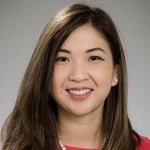Dr. Nguyen, a primary care physician in Orange County, California, received a phone call Wednesday morning from his medical group. “Would you be interested in giving out the COVID-19 vaccine?”
The call was unexpected but welcomed. He hadn’t heard that primary care doctors were being enlisted to administer the vaccine. In fact, news across the country indicated unrest among the primary care community feeling left out of the vaccine rollout. However, perhaps this was a sign that things were changing that would bring primary care doctors to the forefront of the battle against the virus. On February 9, 2021, the Biden administration announced that community health centers could obtain and administer COVID-19 vaccines. Toolkits were also being developed to support and anticipate vaccine rollouts in primary care settings.
For Dr. Nguyen, his medical group had acquired vaccines from the county’s public health department, which had acquired vaccines from the state. The medical group wanted to know how many vaccines Dr. Nguyen needed—the only stipulation was that the vaccine could only go to patients 65 years and older who were covered by Medi-Cal, California’s version of Medicaid, which is a public, fee-for-service program that covers 13 million lives. Per guidelines from the Centers for Disease Control and Prevention (CDC), patients eligible for Medicaid are high-risk for COVID-19 hospitalization and mortality.
Dr. Nguyen runs a small primary care practice in the heart of Little Saigon, a community that is home to the highest number of Vietnamese outside of Vietnam. In January 2021, Orange County had reported record case rates (128 cases per 100,000) with hospital ICU capacity reaching 95%, which likely stimulated vaccine supply delivery to the county. His practice serves mostly first or second generation Vietnamese—that is, people who are relatively recent immigrants. His patients are mostly older adults who speak little or no English. He has lost several patients to COVID-19 and reports seeing sharp increases in positive cases following Thanksgiving. His observations are consistent with trends from the California Bay Area, which indicate that Vietnamese Americans, the fourth largest Asian American ethnic subgroup, have higher infection rates than their proportion of the population. In other words, many of his patients have elevated risks for COVID-19 hospitalization.
“Yes, of course,” he responded and told his medical group that he could get patients in tomorrow, worrying that if he picked a later date, the vaccines would run out. “I’ll call back this afternoon with the exact number of doses we need.” The medical group agreed to set up an outdoor tent at a centralized location for Dr. Nguyen the next day.
Dr. Nguyen and the practice manager got to work to identify their eligible patients. They pulled up their list of 50 Medi-Cal patients over the age of 65, and the practice manager started calling. Some patients picked up and said they already received the vaccine. Some calls rang indefinitely, requiring the practice manager to call back multiple times. But for 25 patients, this was the call that changed their COVID-19 trajectory.
The practice manager describes hearing sheer disbelief on the receiving end of those 25 calls when the patient learned they were being offered a vaccine and realized the vaccine would be administered by their own primary care doctor, someone they knew and trusted. In these conversations, the practice manager heard patients express fear of the vaccine. She was asked, “Is it really safe? Did you get it? Did anything happen to you?” While COVID-19 vaccine hesitancy is reportedly low among Asians, it is still unknown how vaccine hesitancy differs by Asian subgroups and age groups. For those 25 patients, getting reassured that both their doctor and practice manager received the vaccine and would be the ones administering the doses was what convinced them to accept the vaccine.
In primary care practices, especially small ones like Dr. Nguyen’s, the physician and practice manager often have strong relationships with their patients. They know who struggles with comorbidities and who has limited English language proficiency, limited access to the Internet (which was required to schedule a vaccine in the county), and live in congregate settings. Such social factors make acquiring a vaccination appointment extremely challenging for these patients and are deterrents for those who distrust the vaccine. These social factors are what researchers refer to as social determinants of health and are defined as “conditions in the environments in which people are born, live, learn, work, play, worship, and age that affect a wide range of health, functioning, and quality-of-life outcomes and risks.”
While the U.S. Preventive Services Task Force recommends that primary care practices capture social determinants, only about 15% of U.S. primary care practices screen for all five social needs: food, housing, transportation, utilities, and interpersonal violence. While Dr. Nguyen and the practice manager have not yet implemented a social determinants of health screening tool into their practice, their close relationships with their patients gave them knowledge about their patients’ social factors. This knowledge was important in establishing relationships with their patients, which likely played a large role in increasing patients’ receptivity to the vaccine. In fact, the practice manager recalls a patient saying, “I’m only getting the vaccine because it’s coming from you.”
On the day of, patients arrived at the tent at their scheduled times and greeted Dr. Nguyen and the practice manager. To expedite the process, the practice manager had planned ahead and pre-populated the required CDC forms. She walked the patients through the forms, translating into Vietnamese when necessary. A few patients cried in gratitude, wondering how this might’ve gone had they have gone to another vaccination site, where translators and help may not be available.
Dr. Nguyen administered all 25 shots that day. In 28 days, the 25 patients, Dr. Nguyen, and the practice manager will return to that tent to complete the second dose.
Age is the greatest known risk factor for COVID-19-related hospitalization, but while the U.S. still faces vaccine supply shortages, it remains challenging for our country to prioritize who among the millions of eligible elderly people should get vaccinated first. To ensure equitable distribution and reach of the vaccine to people who are the most vulnerable, we need to consider social determinants of health in our vaccine distribution plans. However, there is no easy way for current public health systems to assess social factors, and the expectations of vulnerable peoples to self-prioritize and self-schedule are unjust.
Small primary care practices like Dr. Nguyen’s are able to assess social determinants of health, even if ad hoc, and they can leverage patient-provider relationships to increase trust in vaccine acceptance. This story showcases one example of the value of the primary care doctor in an equitable vaccine rollout to reach vulnerable populations. While low vaccine supply makes it unlikely that primary care offices will be able to receive vaccines directly any time soon, it is my hope that there will more opportunities like this during the pandemic for primary care doctors to do what they do best—protect their patients through systematic prevention and leverage the trust they’ve built with their communities to rebuild trust in our healthcare system.
**Feature photo obtained with standard license on Shutterstock.
Interested in other articles like this? Subscribe to our bi-weekly newsletter
Interested in contributing to the Harvard Primary Care Blog? Review our submission guidelines

Ann M. Nguyen, PhD, MPH, is a research assistant professor at the Rutgers Center for State Health Policy and affiliate faculty in the Department of Family Medicine and Community Health at the Rutgers Robert Wood Johnson Medical School. Her work focuses on primary care, care coordination, vertical integration, and implementation science.
- Share
-
Permalink


